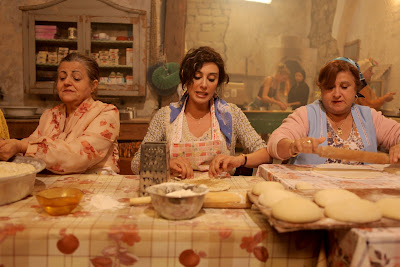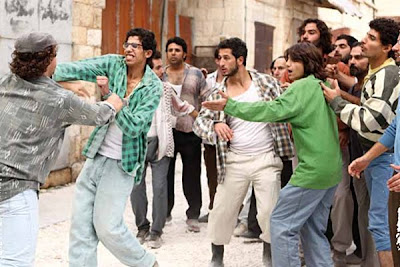
Gender role was clear in the film, as we can see how women sacrificed everything to help their husbands and kids to coexist with the other habitants under the religious pressures that everyone went under from time to time.
As known and as it is always the case in almost all movies, women are stereotyped to cook. We see that in one of the scenes were all women are gathered in the kitchen preparing pies. We also see that one of the women prepares gel, and her son takes it to the city to sell it, they cook to live. In all the scenes women were shown doing activities that don’t require physical labour, yet necessitate to have moral and spiritual power. We see that when “” hid the death of her youngest son from everyone around her just so she doesn’t become the subject of religious conflict among different legions citizens. Femininity in the film was clearly stated through the physical appearance of women where the only clothing they put on were skirts and dresses. Through the behavior where they keep coming up with tricks in order to keep men out of the religious war happening in other villages, by burning the newspapers and breaking the television.


On the other hand men were associated with power in different scenes in the movie. For instance, men did all the work that required physical power such as moving the furniture, carrying sheep on their backs and carrying coffins on their shoulders. Men also have certain jobs to do, for instance, we see Rabee, painting the walls of Amal’s cafeteria. In some scenes men were chilling in the cafeteria drinking tea, smoking and playing cards, which represents men’s behavior during their past time. Men were impatient and easy to lost their temper. Moreover men show power on each other in fights. Showing physical power, having certain behavior and being emotionless sometimes represented masculinity.

Gender socialization was presented in the film in scenes that show the two teenagers, Nassim and Rokas, taking long travels on their bikes to sell products that are made by the village’s women in the city and brining grocery to their family and leaving the house in the early morning to be on time for the opening of the souk. They socialize to behave in a specific way that forces them to grow beyond their young age.

The way each character looked, behaved and expressed their feelings meant to give women femininity, and men masculinity.
No comments:
Post a Comment
Note: Only a member of this blog may post a comment.